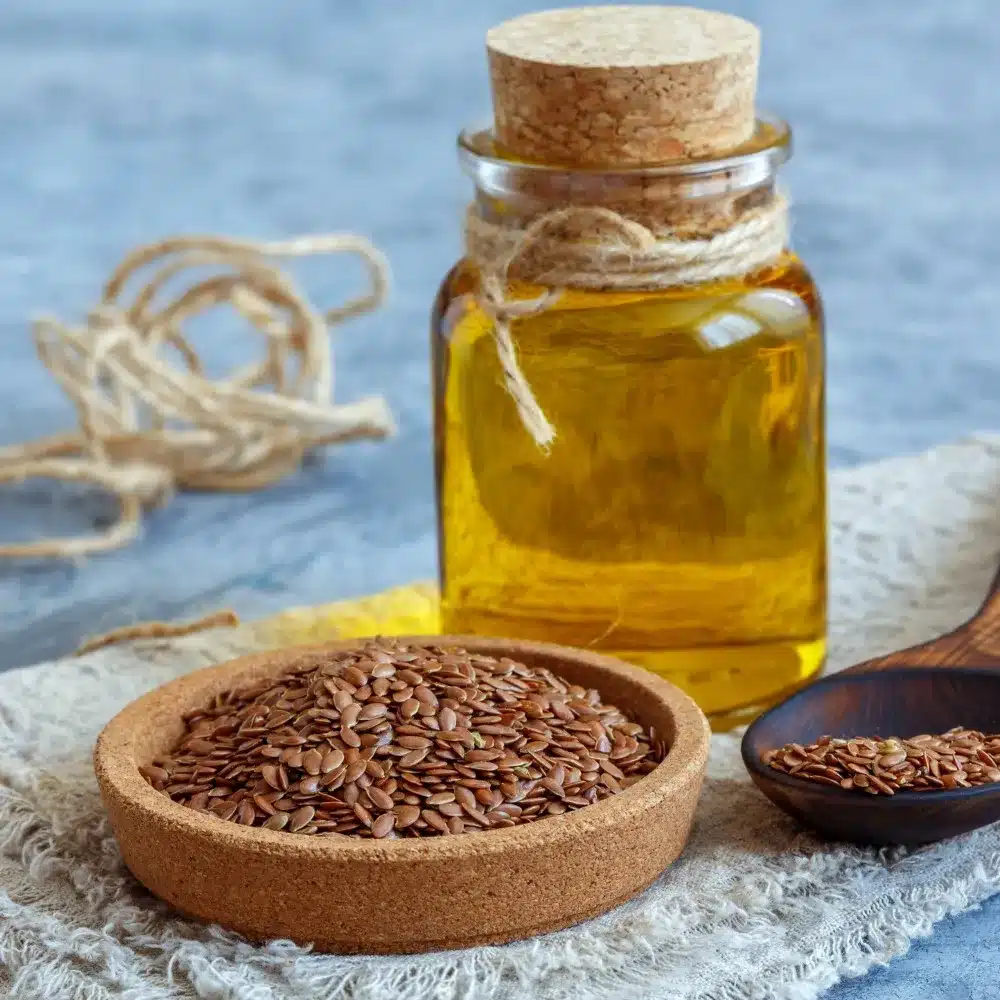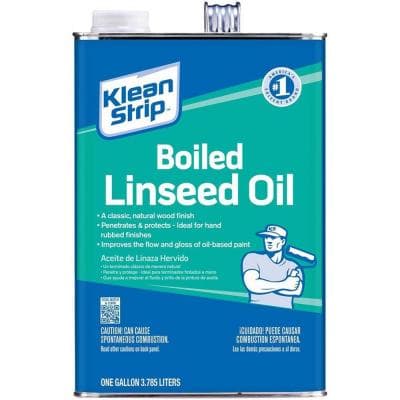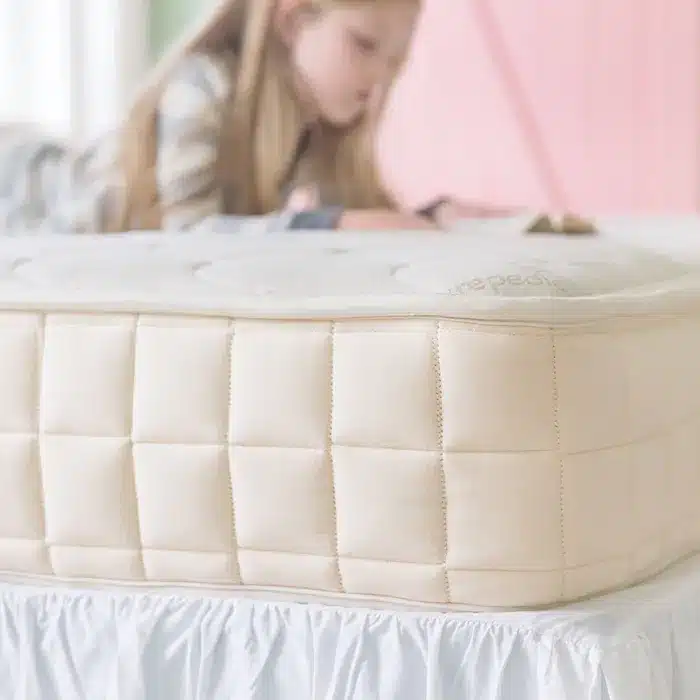Is Linseed Oil Toxic?
Written by:
Maia James
02/01/2016

Updated: 09/29/2023
Looking for a different guide? Browse them all HERE.
We’ve written before about the toxins household furniture releases into our homes (When Furniture Attacks), but mostly have focused on upholstered furniture (check our Safe Sofa Guide for Good Stuff brands).
Toxins in Wooden Furniture
Finding nontoxic wooden furniture can actually be just as challenging as finding a nontoxic sofa, even though you don’t have to worry about flame retardants. Choosing only solid wood pieces is a great start (lots of “wooden” furniture is really made of particle board or plywood which is glued together with formaldehyde-releasing adhesives), but the finishes can be another big problem.
One area of confusion for lots of folks is around linseed oil. Is this truly a nontoxic wood finish, or just Sneaky Stuff?
Here’s the deal with linseed:
Based on our research, we feel that pure, 100% linseed oil poses little, if any, toxic threat to human health, even though it does emit an odor as it dries. Material Data Safety Sheets (MSDS) on linseed oil tell us that it is non-toxic, and various other sources confirm this.]
Beware of “boiled linseed oil.”

The confusion around linseed oil arrives when with “boiled linseed oil,” which is what’s found in most stores/home-centers is confused with 100% linseed oil.
Basically, there are three types of linseed oil, two of which are non-toxic.
1) Raw linseed oil is, in fact, flax seed oil. It takes a long time to dry but is entirely non-toxic.
2) The polymerized version is true “boiled” linseed oil, sometimes called “stand oil”. Stand oil is generated by heating linseed oil near 300 °C for a few days in the complete absence of air. Under these conditions, a is highly viscous product results, which provides exceptionally uniform coatings that “dry” to more elastic coatings than linseed oil itself. It also dries much more quickly (although still more slowly than toxic, commonly-used polyurethanes.) This true boiled linseed oil is also non-toxic.
3) The “boiled linseed oil” you can buy in most stores is actually mostly raw linseed oil, but with plasticizers, hardeners, and heavy metals added to make it act like true boiled oil, without the time and effort it takes to actually boil it; in other words, it’s cheap. Folks who are concerned about the toxicity of linseed oil are likely thinking of this type.
We’ve identified two sources for good linseed oil: Heritage Natural Finishes and Earthpaint.
Stay sane,


Maia, Founder & CEO
Note: This article contains affiliate links or sponsored content, which means that if you make a purchase, we may earn a commission. We only recommend products that meet our strict standards for non-toxicity and that we use (or want to use!) ourselves. Thank you so much for supporting the brands that make Good Stuff!
Enjoying this guide?
Join 60K families who rely on our free guides on everything from milk to mattresses! Sign up to get $5 off your first order, access to our ultimate Clean Products Cheat Sheet, and ongoing exclusive access to coupon codes and promotions. Our weekly newsletter is filled with well researched tips and tricks to live a toxin-free lifestyle.
Related Posts
Non-Toxic Sunscreen Guide
Start Here: 5 Crucial Steps to Decrease Toxins in Your Home
Are Serta Mattresses Toxic?
How to Create a Sustainable, Non-Toxic Yard
-
I purchased 2 natural wood microwave carts from IKEA . The directions say to oil them before using. What can I use that is safe for animals and at the same time safe for humans since food will be sitting on them. My son who is a furniture refinisher said to get boiled linseed oil. Can you tell me the ingredients in boiled linseed oil and if it’s toxic and safe to use around food?
-
You dont answer if it is toxic at all. You just say that cheap boiled linseed oil is what people are likely to be thinking of. Are they thinking its toxic and correct or not? Thank you,
-
Great explanation, thank you so much! I will be buying flaxseed oil meant for ingestion, for wood finishing!
-
Thanks for the good info.
I’m now going to read the material safety data sheet before buying finishes
-
hi, does anyone know of a brand that IS nontoxic?
-
what about Refined linseed oil?thx
-
The link supplied by Ryan is for Sunnyside RAW Linseed oil.
The Sunnyside BOILED Linseed OIl does indeed contain toxins.
https://www.sunnysidecorp.com/pdfs/SDS_87216.pdf -
Thanks for the good article and for sharing your thoughts about the toxicity of linseed oil. It is a shame indeed that those oils are sold under the label of a natural oil, mentioning only in the small print that it’s toxic.
Another issue with the boiled linseed oil is that it tends to ignite and there are quite a few accidents in the US every year: cloth or rugs ignite and cause a fire if they are not properly washed out after applying boiled linseed oil. -
Hi,
I’m considering using boiled linseed oil to seal the floor of a shipping container instead of the Uaual marine epoxy. The goal is to prevent vapors from the floors treated with pesticides escaping into the container, since we are going to live in it. Is anyone familiar with boiled linseed oil used to seal pesticides inside of wood so that the vapors don’t escape?
Thanks,
Hec -
The safety data sheet is linked on the Sunnyside website, and indicates that it is indeed 100% non-toxic pure linseed oil… I bought some and it seems fine
-
Thank you for important information
-
Hi Maia,
Wonderful article. I’m currently seeking non-toxic Linseed Oil and came across Sunnyside brand. What are your thoughts? I’m concerned as the gallon containers are quite cheap. Do you think they’re honestly non-toxic? http://www.sunnysidecorp.com/product.php?p=cf&b=s&n=873G5Thank you.
-
This article about the toxicity of boiled linseed oil isn’t very helpful because it doesn’t tell me how to tell the cheap boiled linseed oil from the not so cheap but still nontoxic boiled linseed oil. I still left guessing. Thanks for explaining the rest though.
-
Agreed. If you are considering a particular brand of boiled linseed oil and want to make sure it doesn’t have the plasticizers and heavy metals in it, ask the hardware store for the MSDS (Material Safety Data Sheet) if they can’t print you a copy, you should be able to find it online. By law, chemical substances like this have to have an MSDS available before it can be sold to the public—so as to avoid any harmful chemical reactions and to receive classificationfor storage and handling. The MSDS should tell you the list of ingredients, even if the product label doesn’t.
-





Leave a Reply
You must be logged in to post a comment.